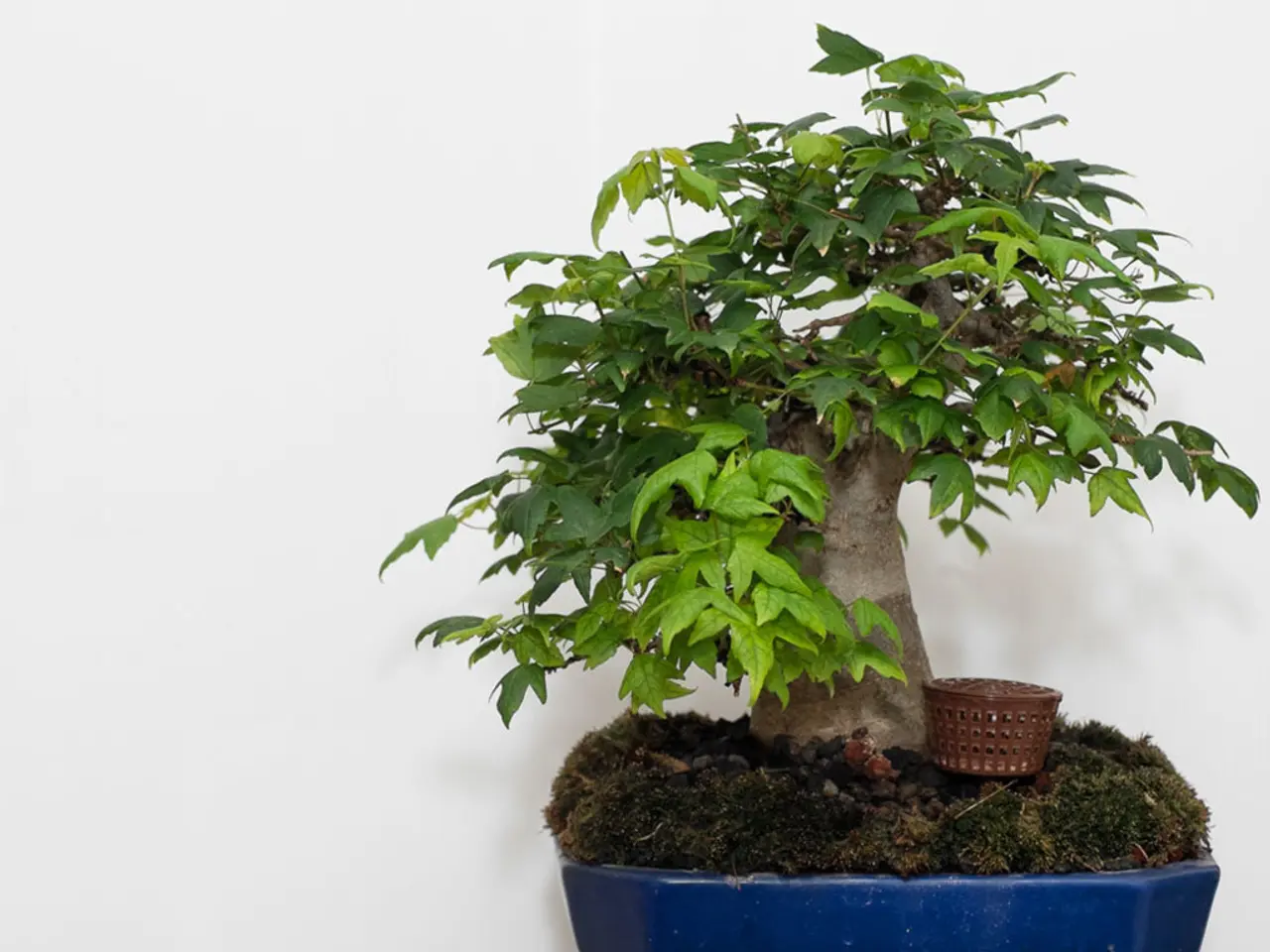Maintaining Bonsai Moss: Stopping Excessive Growth and Promoting Health
==================================================================
Moss can add a touch of enchantment to Bonsai trees, enhancing their natural beauty without overpowering their presence. However, maintaining moss on Bonsai requires careful consideration and balance to ensure the tree remains the dominant visual element while the moss provides a subtle, harmonious accompaniment.
Trimming and cleaning moss is essential to prevent moisture trapping that can harm the bark. Gently remove moss from the trunk by hand or use a soft-bristled toothbrush dipped in water to brush along the grain of the bark without damaging it. Avoid letting moss completely cover the trunk to keep the bark healthy and visible.
Pruning the Bonsai tree regularly is vital for its health and shape. Use sharp, clean bonsai scissors to trim overgrown branches, which also helps keep airflow good around the tree and can indirectly limit excessive moss growth due to better drying conditions.
Nutrient management involves regular fertilization, typically monthly, with a diluted liquid compost or bonsai-specific fertilizer. Fertilizing helps the Bonsai grow vigorously and ensures roots remain healthy, which balances the soil environment where moss thrives. Avoid fertilizing newly sprouted roots excessively to prevent burning them.
Controlling moss growth means balancing moisture: mosses retain water well, so a moderate layer over soil is useful, especially during dry periods, but too much moisture trapped in direct sun can heat roots and cause damage. If moss traps too much moisture, use shading like a cloth to reduce heat and water logging. Allow soil to dry moderately between watering to avoid root rot.
Additional tips include repotting every 1–2 years to refresh soil and trim roots, rotating Bonsai for even light exposure, and avoiding overwatering by checking soil moisture before watering. Neem spray can be used to prevent pests that may affect moss health indirectly.
Among the mesmerizing moss species, Hypnum, Dicranum, and Sphagnum are ideal choices for elevating Bonsai displays due to their vibrant colors, varied textures, and adaptability. Organic matter like compost or humus can be incorporated into the soil to help regulate the nutrient cycle and allow the tree to absorb the necessary nutrients while the moss benefits from the organic matter's slow release of nutrients.
Early detection and swift action are vital in preventing the spread of common pests and diseases such as fungal infections, spider mites, snails, and slugs. Introducing foreign moss can potentially introduce invasive species, diseases, or pests that can harm the Bonsai tree.
In summary, maintaining moss on Bonsai trees involves gentle trimming, pruning, nutrient management, and controlling moss growth to balance moisture retention and tree health. By following these best practices, you can create a stunning Bonsai moss display that complements the tree's natural beauty without causing harm.
[1] Moss Cleaning Techniques for Bonsai Trees: https://www.bonsaiempire.com/moss-cleaning-techniques-for-bonsai-trees/ [2] Bonsai Moss: How to Care for Bonsai Moss: https://www.bonsaiempire.com/bonsai-moss-how-to-care-for-bonsai-moss/ [3] Bonsai Moss Care: How to Care for Bonsai Moss: https://www.bonsai4me.com/bonsai-moss-care-how-to-care-for-bonsai-moss/ [4] Bonsai Moss: A Complete Guide to Bonsai Moss Care: https://www.bonsaiempire.com/bonsai-moss-a-complete-guide-to-bonsai-moss-care/
The home-and-garden enthusiast might find gardening moss an excellent addition to their Bonsai trees, enhancing the lifestyle and aesthetic appeal. Regularly pruning the Bonsai tree, trimming overgrown branches, and gently removing moss from the trunk helps maintain a harmonious balance between the tree and the moss.




